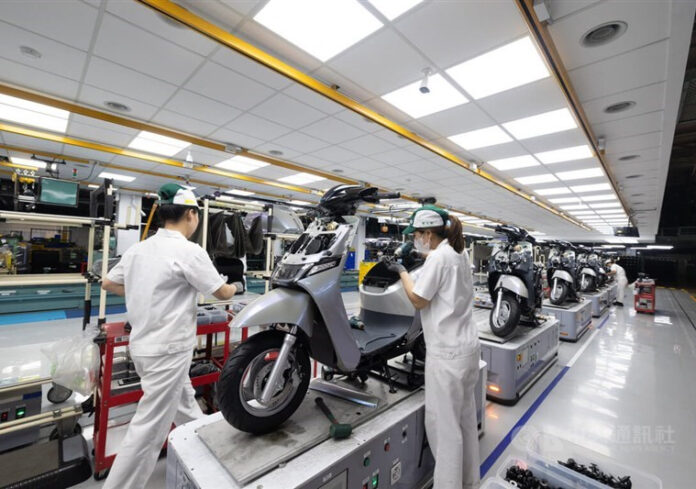Introduction: Taiwan’s manufacturing sector saw a slowdown in December, with the purchasing managers’ index (PMI) showing continued expansion, though at a slower pace. The decline in the PMI figures raises concerns over the country’s economic outlook as uncertainties from global factors continue to affect local industries.
Manufacturing Expansion Slows as PMI Falls to 50.8
The Taipei-based Chung-Hua Institution for Economic Research (CIER) reported that Taiwan’s PMI for December registered at 50.8, indicating expansion but at a reduced rate compared to the previous month. The seasonally adjusted PMI fell by 0.6 from November, signaling a slowdown in the manufacturing sector’s growth.
A PMI reading above 50 signals growth, while values below 50 represent contraction. Despite this decrease, the overall economic condition in December is still viewed cautiously optimistic, though businesses are facing significant challenges due to the global economic environment.
Key Factors Driving the Slowdown
CIER’s data revealed that among the five major subindexes in the PMI, new orders and production experienced significant drops. Specifically, new orders saw a reduction of 4.6, falling to 50.9, while production dropped by 2.4, standing at 52.1. These declines were attributed to uncertainties surrounding demand from end-users, highlighting the volatility that manufacturers are currently navigating.
| Subindex | December 2024 | November 2024 |
|---|---|---|
| New Orders | 50.9 | 55.5 |
| Production | 52.1 | 54.5 |
| Employment | 51.1 | 50.3 |
| Supplier Deliveries | 52.5 | 48.3 |
| Inventories | 47.4 | 48.6 |
Employment and Supplier Deliveries Show Improvement
Despite the slowdown in new orders and production, there were positive developments in other areas. Employment and supplier deliveries rose by 0.8 and 4.2, respectively, showing positive movement in workforce stability and supply chain efficiency.
However, inventories remained in contraction mode, reflecting a drop of 1.2 from November to 47.4 in December. The contraction in inventory levels indicates that manufacturers are still adjusting to fluctuating demand.
Business Outlook Remains Negative
The business outlook subindex for the next six months showed a significant drop, falling by 1.8 points to 46.1. This represents the largest decline since January 2024. The negative outlook suggests that local manufacturers remain uncertain about future market conditions, with the fourth consecutive month of contraction in this sector.
CIER President Lien Hsien-ming explained that unexpected rush orders, primarily for critical electronic components, skewed the outlook for December. These rush orders were driven by concerns over potential U.S. tariff hikes, particularly in light of U.S. President-elect Donald Trump’s comments about raising import duties on goods shipped to the United States.
Global Economic Uncertainty Looms
Lien noted that the political and economic landscape in both the U.S. and China remains unclear, particularly as Trump prepares to take office in January. His policies could significantly impact various industries, including Taiwan’s manufacturing sector. The uncertainty over trade policies has left businesses on edge, as they await clearer signals after Trump’s inauguration.
Service Sector Continues to Expand
While Taiwan’s manufacturing sector faces challenges, the service sector showed robust growth. The non-manufacturing index (NMI) rose by 1.9 points from November, reaching 56.5 in December, marking the 26th consecutive month of expansion. This growth is largely attributed to ongoing demand in Taiwan’s service-related industries.
However, the service sector’s outlook for the next six months dropped slightly, falling to 50.5. Despite challenges in the residential property market due to tighter regulations, Taiwan’s commercial property market remains relatively resilient.
Conclusion: Taiwan’s Economy Faces Mixed Outlook
The data for December presents a mixed picture for Taiwan’s economy, with manufacturing slowing and service sectors maintaining growth. As global trade dynamics shift, local businesses remain cautious, especially with the uncertain political climate ahead. Manufacturers will have to closely monitor developments in the U.S. and China to navigate the challenges in 2025.
FAQ
1. What is the Purchasing Managers’ Index (PMI)? The PMI is an economic indicator that surveys businesses to gauge the health of the manufacturing and services sectors. A PMI above 50 signals expansion, while below 50 indicates contraction.
2. Why did Taiwan’s PMI drop in December? The drop in PMI is attributed to uncertainties in demand, especially with key export markets and ongoing global trade concerns, including potential tariff hikes from the U.S.
3. How does the political situation in the U.S. affect Taiwan’s manufacturing sector? The political uncertainty, particularly regarding trade policies under President-elect Trump, has led to volatility in manufacturing demand. Taiwanese companies are adjusting to the potential impacts of higher tariffs on exports.
